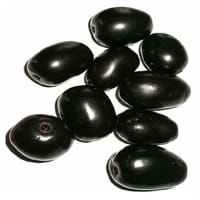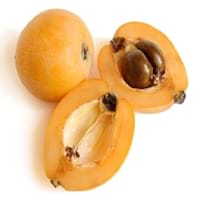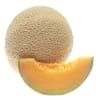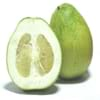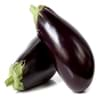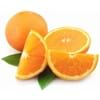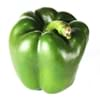Health Benefits
Cancer prevention, Heart care, Increase in haemoglobin, Regulates Blood Sugar, Ulcer prevention
Cancer prevention, Heart care, Reduces nervous tension, Reduces blood circulation problems, Reduces stress, Regulation of heart rate, Strengthening of bones
General Benefits
Boosts immune system, Digestive aid, Fights against infections, Strengthens bones
Anti-inflammatory properties, Controls blood pressure, Digestive aid, Eye care, Helps in weight loss, Improves eye vision, Maintains healthy cholesterol level, Strengthens bones
Skin Benefits
Brightens and lightens complexion, Skin cleansing, Skin rejuvenation, Treatment of acne, Treatment of dark spots
Anti-aging benefits, Reduces wrinkles, Treatment of dark spots, Treatment of skin diseases
Hair Benefits
Promotes longer and healthier hair, Protects hair
Protects hair
Allergy Symptoms
Abdominal pains, NA
Diarrhea, Itching of mouth, Nasal congestion, Sneezing, Swelling of face, Watery eyes
Side Effects
Decrease in blood sugar levels, Allergic reaction, Throat irritation, Throat swelling, Possibly unsafe during pregnancy
Allergic reaction
Best Time to Eat
As a snack in the late afternoon, Don't consume at night and before bed, Eat the fresh ones, avoid mixing with any other foods, don't eat after meal., Morning time (before lunch), Strictly avoid empty stomach
Along with meal, As a snack in the late afternoon, Don't consume at night and before bed, Morning time (before lunch)
Vitamin B9 (Folic acid)
Not Available
Vitamin C (Ascorbic Acid)
Not Available
Calories in Fresh Fruit with Peel
Calories in Fresh Fruit without Peel
Not Available
Not Available
Calories in Frozen Form
Not Available
Not Available
Calories in Dried Form
Not Available
Not Available
Calories in Canned Form
Not Available
Calories in Juice
Not Available
Calories in Jam
Not Available
Calories in Pie
Not Available
Type
Tree fruit, Tropical
Tree fruit, Tropical
Season
Monsoon, Summer
Winter
Varieties
Ram Jarnun and Paras
Ahdar, Ahmar, Asfar, Blush, Champagne, Early Red, Eulalia, Fire Ball, Golden Red, Golden Yellow, Oliver, Thales, Thames Pride, Victor and Wolfe
Color
Black, Magenta, Purple
Orange, Yellow
Inside Color
Purple
Orange
Taste
Astringent, Sweet
Sweet, Tart
Origin
Bangladesh, India, Indonesia, Malaysia, Nepal, Pakistan, Philippines, Sri Lanka
China
Soil Type
Loam, Sandy loam, Well-drained
Clay, Loam, Sand, Well-drained
Climatic Conditions
Humid, Rainfall
Warm to hot climate
Facts about
- Wood of jambul tree is water-resistant wood & is used in railroads and to implement engines in the well.
- In Indian mythology, it is said that Jambul fruit was revered by Buddha.
- Jambul has a huge importance in Ayurveda.
- Loquats are used in plum wine manufacturing.
- Dried leaves of loquat are used to make herbal tea.
- The seeds of loquat are slightly toxic & the symptoms of intoxication are nausea, vomiting & shortness of breath.
Other Countries
Bangladesh, Indonesia, Malaysia, Nepal, Pakistan, Philippines, Sri Lanka
Brazil, Chile, China, Egypt, Israel, Italy, Morocco, Pakistan, Portugal, Spain, Turkey
Top Importer
Not Available
China
Botanical Name
Syzygium cumini
Eriobotrya japonica
Synonym
Eugenia cumini
Crataegus bibas or Mespilus japonica or Photinia japonica
Subkingdom
Tracheobionta
Tracheobionta
Division
Magnoliophyta
Magnoliophyta
Class
Magnoliopsida
Magnoliopsida
Family
Myrtaceae
Rosaceae
Genus
Syzygium
Eriobotrya
Species
S. cumini
E. japonica
Generic Group
Not Available
Rose
Difference Between Jambul and Loquat
We might think that Jambul and Loquat are similar with respect to nutritional value and health benefits. But the nutrient content of both fruits is different. Jambul and Loquat Facts such as their taste, shape, color, and size are also distinct. The difference between Jambul and Loquat is explained here.
The amount of calories in 100 gm of fresh Jambul and Loquat with peel is 60.00 kcal and 47.00 kcal and the amount of calories without peel is Not Available and Not Available respectively. Thus, Jambul and Loquat belong to and category.These fruits might or might not differ with respect to their scientific classification. The order of Jambul and Loquat is Myrtales and Rosales respectively. Jambul belongs to Myrtaceae family and Loquat belongs to Rosaceae family. Jambul belongs to Syzygium genus of S. cumini species and Loquat belongs to Eriobotrya genus of E. japonica species. Beings plants, both fruits belong to Plantae Kingdom.
